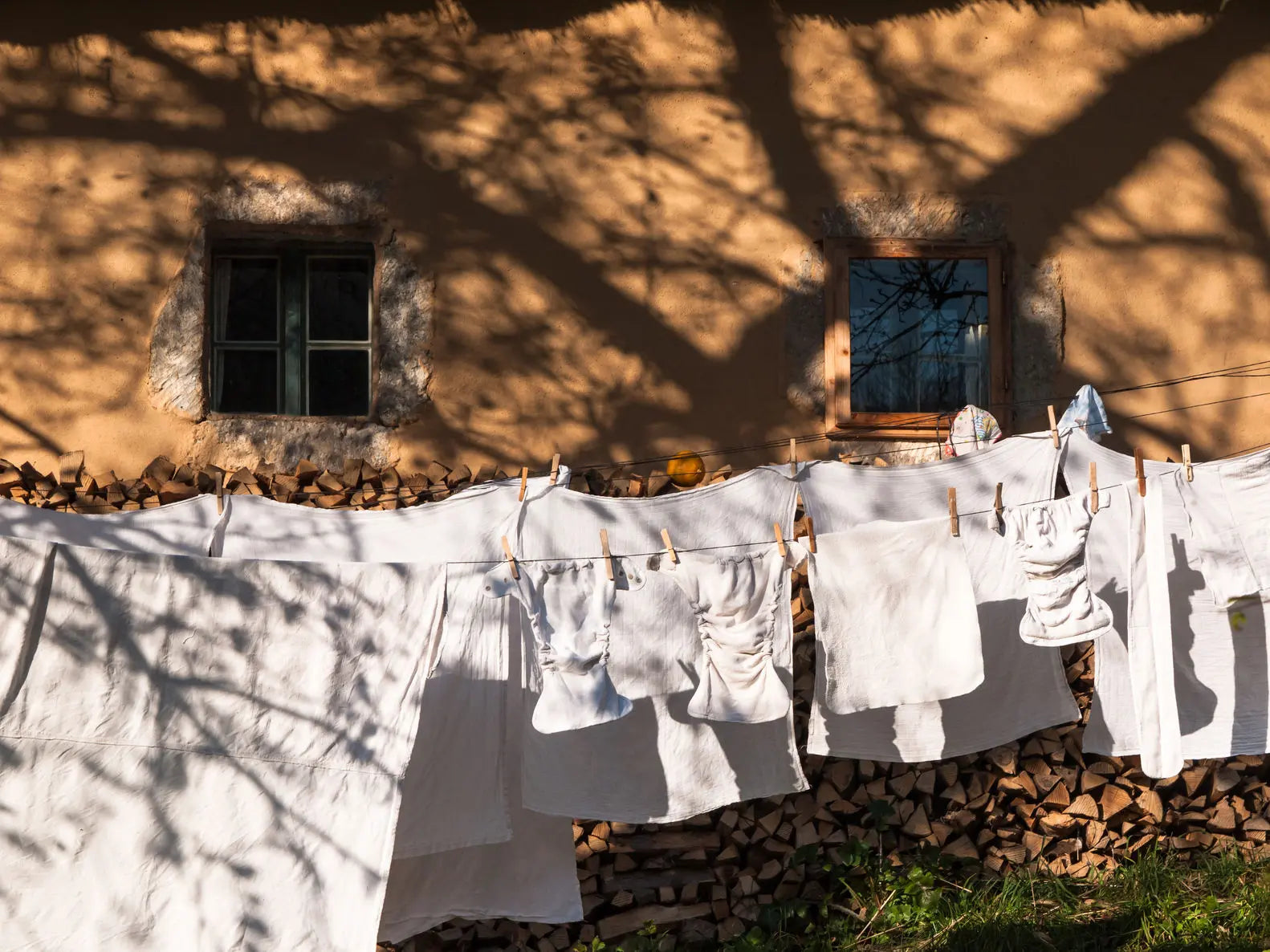Nappy Washing and Drying Tips
•Posted on June 15 2018

Nappy Washing and Drying Tips
We hope these nappy washing and drying tips help you in your cloth nappy journey! By washing the nappy properly we gain two main advantages that are:
- prolonging the lifespan of the nappy
- avoiding detergent build up
Cloth Nappies undergo quite a bit of laundering in their lifetime, a good quality nappy will be washed around 300 times or perhaps more. Washable nappies will spend a lot of in time wet acidic or alkaline solutions (for example wet with pee), they go through high wash temperatures and may be tumble dried from time to time. All of these things will all take their toll and can shorten the lifespan of your nappies.
Helpful Tips for washing your nappies:
Wash new cloth nappies at least once before you use them to ensure they are completely clean.
This pre-washing will also add up to mum and dad’s peace of mind knowing that any chemicals acquired during manufacturing and packing will be washed away.
In addition wash inserts a few times (2-3 for example) as this will increase their absorbency. Remember this is the cloth that absorbs the urine so it is best that they are at their maximum efficiency straight away!
Start with a cold pre-wash cycle, then a regular wash in hot water (unless your directions say otherwise). Follow with a rinse. Make sure the nappies are very well rinsed. The rinse water should be completely detergent-free by the last cycle. Try your best to add just the right amount of detergent, to avoid build up - and avoid the risk of rashes on baby’s sensitive skin
Use non-biological powders as they are better for both baby and the environment. There is also an enzyme present in some bio detergents, which is corrosive to bamboo fibre and cotton. It works by digesting the stains out of your nappies but unfortunately takes the fabric with it! We would recommend looking for more earth friendly choices that are biodegradable and won't leave any residue for our earth to cope with.
You might want to try a liquid detergent because these tend to have gentler cleaning ingredients. And fragrance free can be a good option to avoid contact dermatitis for those with ultra sensitive skin.
For very young babies, it is recommended washing nappies at 60 degrees to kill any bacteria residue on the nappies. As babies get older, there is less of a need to wash at this temperature, so a 40 degrees wash would do, with an occasional 60 degrees wash. Washing at a higher temperature constantly can wear down the waterproof PUL layer on the inside of the outer shell.
Do not use bleach, chlorine or fabric softners and try and avoid getting nappy cream directly on the outer nappy, as this may again damage the PUL layer. Similarly do not iron or dry clean your nappies.
To avoid heavily soiled nappies - there are biodegradable inner liners available in the market, these you can place over your absorbent inserts, to catch the solids - it helps make life simpler for tired mum, as you can simply flush the poo away and even the liners. Again this lessens the toll on your main nappy when it’s time for washing.
Rinse well - Even if you are using a liner get as much poo off the nappies as you can before putting them into the nappy bucket by sluicing i.e. holding in the flush of the toilet. Or consider getting a nappy sprayer (very affordable) to make rinsing time super easy. You would have a tendency to add too much detergent, please make sure you use just the right amount to prevent detergent build up.
Poo from formula or solids isn't water-soluble and won't rinse away easily in the washing machine. Poo from an exclusively breast fed baby, on the other hand, is water-soluble and doesn't require rinsing.
To counter detergent build up (which decreases the absorbency of the inserts and is sometimes unavoidable), occasionally wash the clean nappies and inserts on a plain water wash (i.e. do not add any detergent) and this will dilute out some detergent build up.
Always remember not to keep your soiled nappies too long in your nappy bucket to avoid ammonia and bacteria build-up.
Depending on your circumstance, the issue on hard and soft water does have an effect on your nappy’s lifespan as well. If you line-dry your nappies, finish them off with five minutes in the tumble drier (low setting). This will keep them super soft in hard water areas
Using fabric conditioner, is not advisable - why? Fabric softener reduces the absorbency of nappies, a real no no for longevity and leaks, just tumble dry for 5 mins on low to keep nappies soft
Drying nappies – Line dry i.e. Sunlight is best! - Line-dry whenever you can. Not only will sunlight bleach stains out of your nappies but the UV radiation will help kill bacteria too
Machine drying on a low setting is OK but do not use a hot setting as it may damage the PUL waterproof layer of the nappy